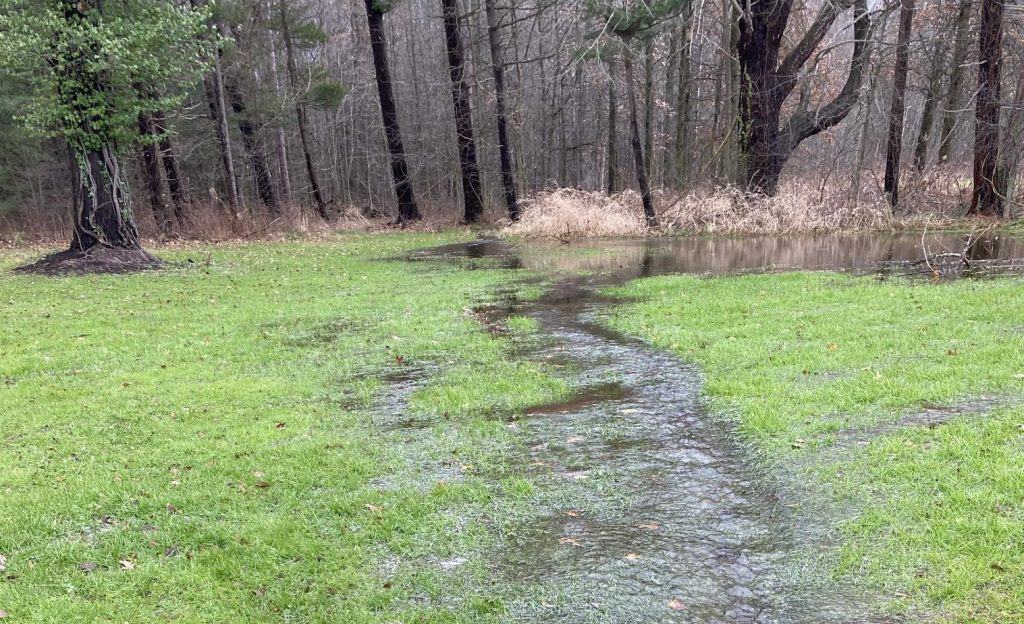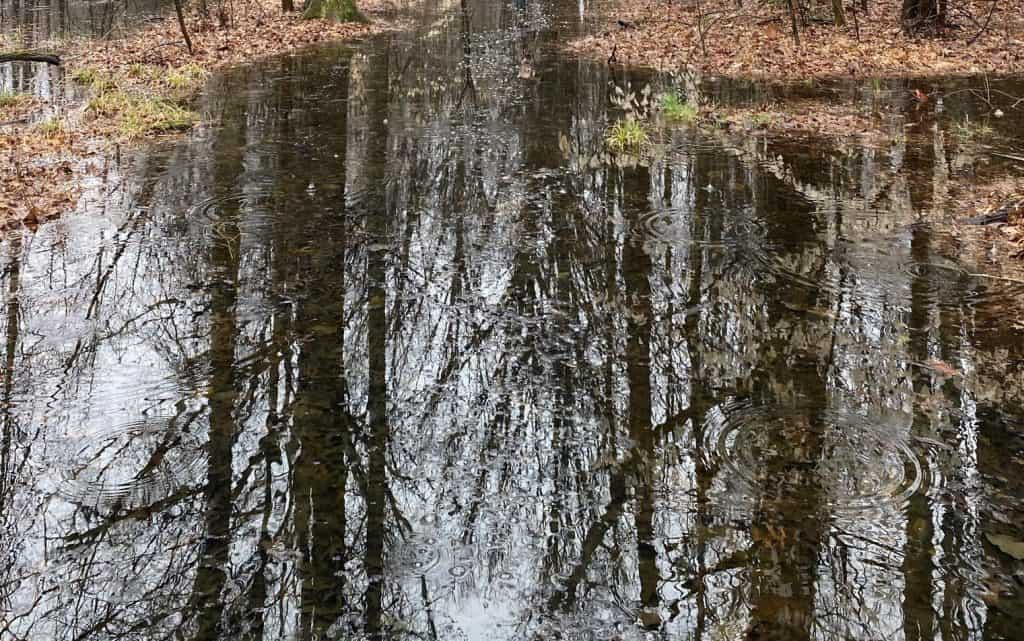Okay, I’ll be honest with you. For today’s blog post, I’m not sure exactly what to write. I’ve been deep in research, trying to figure out how to solve a big issue on my 10-acre property, and I thought I’d share where I’m at. Maybe you’ve faced something similar or might find my blog post helpful down the road.
The Flooding Problem
When we bought the property, I read through the mortgage contract like anyone would. And yes, it said, “Some spots on the property may be prone to flooding.” I didn’t think much of it—until spring came. You see, the flooding doesn’t happen all year; it’s mostly in early spring. When it does happen, though, it can get pretty bad. The water just stays because there’s nowhere for it to drain.
And the worst part? I’ve gotten stuck on my riding lawn mower more times than I can count. The ground gets so muddy, I’ve had to use all my muscle to pull the mower out of the muck. Super frustrating, especially because there’s areas where I can’t mow the grass. Too muddy. Too much water to drive anything that mows through it. What to do?

The Soil Situation
The soil is another big part of the problem. It’s loaded with clay, which means water doesn’t drain. The heavy clay just holds onto it. In the spring, that turns my property into a mini swamp, and the water can stay for weeks. I tried planting vegetable plots, but both failed because the soil stays too wet.
If you live near Lake Erie, you know this is pretty common in the area—lots of places get marshy and waterlogged during the spring months. It’s just part of life here, but that doesn’t mean it’s easy to fix.
The Previous Owner’s Attempts
The previous owner knew about the flooding problem, and he tried to manage it. He dug large drainage holes and even used a plow to carve out some drainage paths on the meadow. But honestly, none of it really works. The water stays, and the clay soil just won’t let go of it.
What I’ve Learned So Far
So, here’s what I’ve learned so far from my research. To deal with the flooding, some property owners propose a few solutions like improving the soil drainage by aerating it and adding organic matter or sand, which might help water move through the soil better. But for bigger flooding issues, it looks like installing things like French drains or dry wells could help by redirecting or storing excess water.
Another option my research has come up with is creating drainage swales—basically shallow trenches lined with gravel or plants that help channel the water away from low spots. Lastly, regrading the yard to adjust the slope could also make a big difference, ensuring water flows away from problem areas and doesn’t settle around the house or other structures.
I doubt there’s anything I can do about the flooding in our small oak and maple hardwoods. But perhaps something can be done in the frontyard, as there’s plenty of water as shown by the photograph above. Taken sometime around early April last year. The flooding stayed until June!
Of course I’ve been looking for literature to learn about this. Books like “Your Guide to Yard Drainage Solutions and Landscaping to Prevent Water Damage“ or “Landscape Drainage Design“ offer practical advice on grading, trenching, and installing drainage systems.
All of this is entirely and completely theoretical. And each of these solutions might be explored in a blog post on its own, more in-depth and when I have more information at hand to deal with this drainage problem.

Still Searching for Solutions
Honestly, all of these solutions are still theoretical for me right now. I’m just sharing what I’ve found through books and research. So far, it’s giving me hope that there’s a way out of this mess! I’m planning to look further into some of these options and see what works, and I’ll keep you updated on my progress.
I’m still figuring things out, and I promise to share any breakthroughs with you in future blog posts. If you’ve had similar flooding issues on your property, I’d love to hear your tips or any solutions that worked for you. It’s a tough problem, but I’m hopeful I’ll find something that works.
